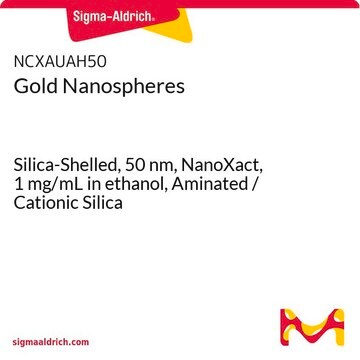추천 제품
양식
liquid
재고 정보
available only in Japan
dilution
(for analytical testing)
pH
3.1-4.4
SMILES string
[Na+].CN(C)c1ccc(cc1)\N=N\c2ccc(cc2)S([O-])(=O)=O
InChI
1S/C14H15N3O3S.Na/c1-17(2)13-7-3-11(4-8-13)15-16-12-5-9-14(10-6-12)21(18,19)20;/h3-10H,1-2H3,(H,18,19,20);/q;+1/p-1/b16-15+;
InChI key
STZCRXQWRGQSJD-GEEYTBSJSA-M
유사한 제품을 찾으십니까? 방문 제품 비교 안내
적합성
pH indicator
Storage Class Code
10 - Combustible liquids
WGK
WGK 3
Flash Point (°F)
Not applicable
Flash Point (°C)
Not applicable
Jie Li et al.
Nanotechnology, 24(15), 155603-155603 (2013-03-23)
We report on the synthesis of high-quality microporous/mesoporous BN material via a facile two-step approach. An extremely high surface area of 1687 m(2) g(-1) and a large pore volume of 0.99 cm(3) g(-1) have been observed in the synthesized BN porous whiskers. The formation
Lin Lin et al.
Nanoscale, 5(2), 588-593 (2012-12-04)
Shell@core-nanostructured TiO(2)@ZnO n-p-n heterojunction nanorods with diameter of 30 nm were successfully fabricated via a hydrothermal method. The photodegradation rate of the TiO(2)@ZnO n-p-n nanorods evaluated by photodegrading methyl orange has been demonstrated to increase three times compared to that
Ya Yang et al.
Nano letters, 13(2), 803-808 (2013-01-18)
In general, methyl orange (MO) can be degraded by an electrocatalytic oxidation process driven by a power source due to the generation of superoxidative hydroxyl radical on the anode. Here, we report a hybrid energy cell that is used for
Soon-An Ong et al.
Environmental science and pollution research international, 20(5), 3405-3413 (2012-11-02)
The objective of this study was to examine the effects of adsorbability and number of sulfonate group on solar photocatalytic degradation of mono azo methyl orange (MO) and diazo Reactive Green 19 (RG19) in single and binary dye solutions. The
Jie Ma et al.
ACS applied materials & interfaces, 4(11), 5749-5760 (2012-10-16)
An alkali-acitvated method was explored to synthesize activated carbon nanotubes (CNTs-A) with a high specific surface area (SSA), and a large number of mesopores. The resulting CNTs-A were used as an adsorbent material for removal of anionic and cationic dyes
자사의 과학자팀은 생명 과학, 재료 과학, 화학 합성, 크로마토그래피, 분석 및 기타 많은 영역을 포함한 모든 과학 분야에 경험이 있습니다..
고객지원팀으로 연락바랍니다.





